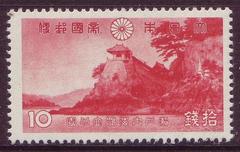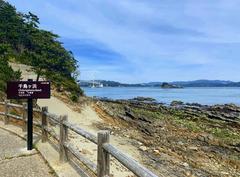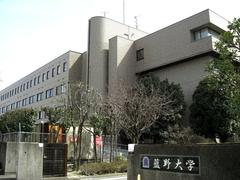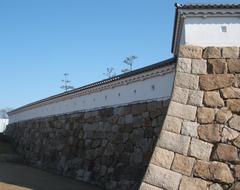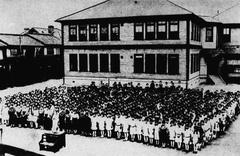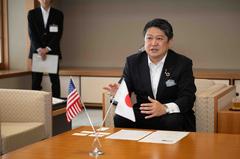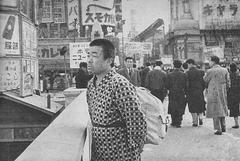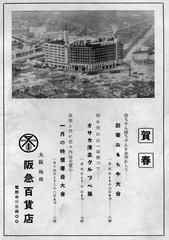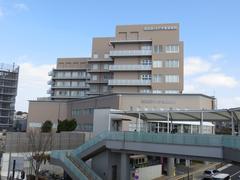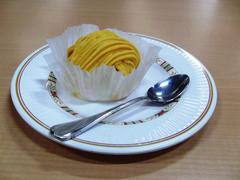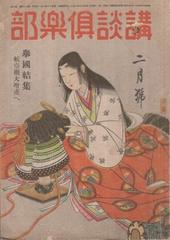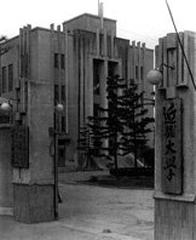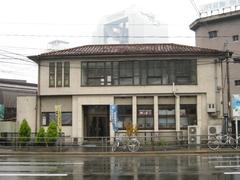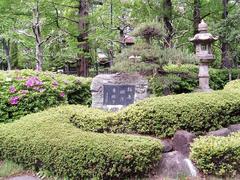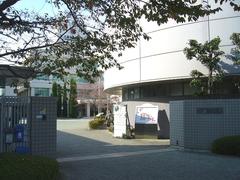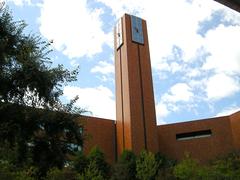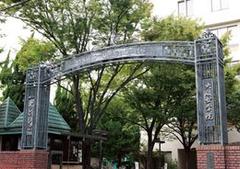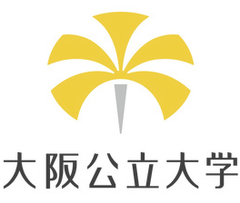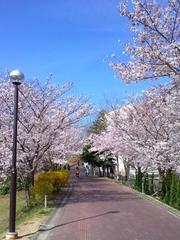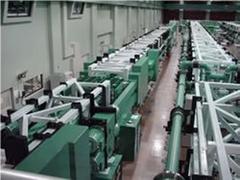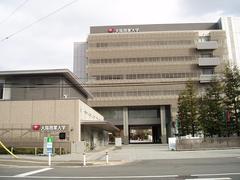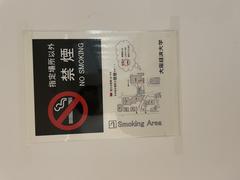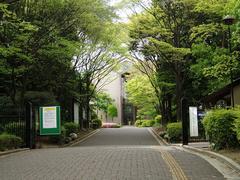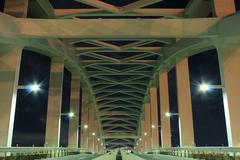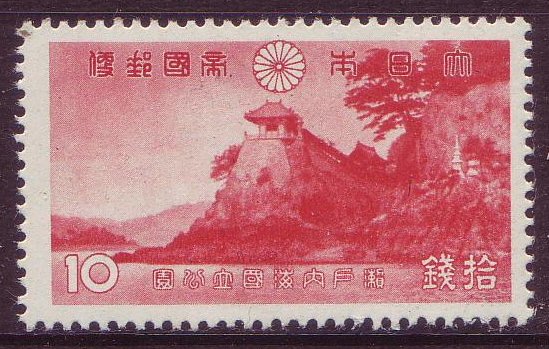
Setonaikai National Park: Visiting Hours, Tickets, and Travel Guide to Osaka Prefecture Historical Sites
Date: 14/06/2025
Introduction
Setonaikai National Park is Japan’s oldest and largest national park, spanning nearly 67,000 hectares and crossing 11 prefectures, including Osaka. This remarkable park blends scenic coastal landscapes with a vibrant tapestry of historical, cultural, and artistic heritage centered on the Seto Inland Sea. Long a vital corridor for trade and exchange—marked by pivotal events such as the Battle of Yashima—Setonaikai today delights visitors with its ancient temples, traditional fishing villages, UNESCO-listed shrines, and contemporary art festivals like the Setouchi Triennale.
Osaka Prefecture, as a convenient gateway, offers access to a wealth of the park’s attractions, ranging from preserved merchant districts and maritime heritage sites to panoramic mountain vistas and immersive cultural experiences. Setonaikai’s ecological diversity is equally compelling, featuring pine-lined beaches, tidal flats that attract migratory birds, and rich marine life that has survived despite the pressures of modern industry.
This guide offers comprehensive information on Setonaikai National Park’s visiting hours, ticketing, accessibility, transportation options from Osaka, and insider tips for a responsible, rewarding visit. For further details, refer to resources such as the Japan Tourism Agency, Japan Travel, and Japan Guide.
Table of Contents
- Early Historical Significance of the Seto Inland Sea
- Ecological Diversity and Conservation
- Cultural Heritage and Historical Significance
- Recreational Opportunities and Visitor Information
- Responsible Tourism and Practical Tips
- Frequently Asked Questions (FAQs)
- Conclusion
- References
Early Historical Significance of the Seto Inland Sea
The Seto Inland Sea (Setonaikai) has played a defining role in Japanese history, serving as a natural boundary and a key maritime corridor linking Honshu, Shikoku, and Kyushu (Japan365days). Its 3,000 islands have witnessed centuries of trade, cultural exchange, and military campaigns.
The Battle of Yashima and the Rise of Warrior Rule
The Battle of Yashima in 1185, fought on these waters, marked the end of the Taira clan and the rise of the Kamakura shogunate, heralding centuries of samurai rule (Japan Tourism Agency). Remnants of this era are preserved in Osaka’s historical sites and local folklore.
Edo Period: Maritime Commerce and Cultural Exchange
During the Edo period, Setonaikai became a bustling artery for commerce and culture, with Osaka flourishing as the “kitchen of Japan.” Merchant districts and annual festivals still celebrate this legacy (Japan365days).
Western Influence and Birth of National Park Ideals
Setonaikai’s scenic vistas captivated 19th-century Western travelers, inspiring early Japanese conservation efforts and the eventual designation of national parks (Japan Tourism Agency).
Establishment and Modern Development
Setonaikai National Park was established in 1934, making it Japan’s first national park (Japan Tourism Agency). Modern infrastructure, such as the Great Seto Bridge, improved access and regional integration while protecting traditional industries and landscapes (Japan365days).
Cultural and Artistic Renaissance
Islands like Naoshima, Teshima, and Inujima are now celebrated for their world-class art museums and the Setouchi Triennale, which have revitalized local communities (Japan Guide).
Ecological Diversity and Conservation
Unique Ecosystems and Biodiversity
Setonaikai National Park comprises a mosaic of land and sea habitats across 11 prefectures (Japan Travel; Tsunagu Japan), supporting Japanese black pine forests, evergreen broadleaf groves, and crucial tidal flats for migratory birds and endemic species like the Japanese horseshoe crab (Wikipedia).
Marine biodiversity thrives in the nutrient-rich, calm waters, sustaining traditional fisheries and aquaculture. After severe industrial pollution in the 1960s–70s, environmental regulations have restored much of the sea’s health (Wikipedia).
Conservation Efforts
Park management balances conservation with community engagement, focusing on habitat restoration, pollution prevention, and sustainable tourism (Japan Travel). Visitor centers such as Goshikidai and Okunoshima offer education and resources.
Cultural Heritage and Historical Significance
Ancient Trade Routes and Pilgrimage
The Seto Inland Sea has long served as a vital corridor for trade and cultural exchange, with historic port towns like Tomonoura preserving the atmosphere of Japan’s feudal era (Japan Travel). The Shikoku Pilgrimage route passes through sacred temples like Negoroji.
Iconic Sites and UNESCO Heritage
Itsukushima Shrine on Miyajima is a UNESCO World Heritage Site, famous for its “floating” torii gate and harmonious blend of culture and nature (Wikipedia). Other highlights include the Kanmon Straits, Seto Ohashi Bridge, and preserved fishing villages.
Contemporary Art and Festivals
Modern art museums and the Setouchi Triennale have established the region as a global arts destination (Japan Guide).
Recreational Opportunities and Visitor Information
Outdoor Activities
- Hiking: Trails traverse Mount Rokko, Mount Washu, and other highlands (Japan Travel).
- Cycling: The Shimanami Kaido offers a 70-km scenic cycling route across islands (Japan Travel).
- Kayaking and Swimming: Calm bays, especially near Awaji Island and Tomogashima, are perfect for water activities (Tsunagu Japan).
- Wildlife Watching: Tidal flats and forests are havens for migratory birds and endemic species.
Unique Natural Phenomena
The Naruto Whirlpools are a dramatic tidal spectacle best viewed by sightseeing boats or the Onaruto Bridge (Wikipedia).
Practical Visitor Information
- Visiting Hours: Most park areas are open year-round. Visitor centers and museums generally operate from 9:00 AM to 5:00 PM, with some seasonal variations.
- Tickets & Entrance Fees: Park entry is free, but certain attractions (e.g., Itsukushima Shrine, museums, ferries) require tickets. Fees range from 300 to 2,000 yen.
- Accessibility: Many key sites are wheelchair accessible, though terrain may be uneven at some historical locations.
- Transportation: Public trains, buses, and ferries connect Osaka to park areas. Car rentals offer flexibility for remote sites (My Beauty Cravings).
- Guided Tours & Special Events: Book tours for history, nature, or art via visitor centers or platforms like Activity Japan.
- Photographic Spots: Top sites include Yashima, Great Seto Bridge, Itsukushima Shrine, and Naoshima’s outdoor art installations.
Responsible Tourism and Practical Tips
- Stay on marked trails to protect delicate habitats.
- Carry out all trash and minimize single-use plastics.
- Respect wildlife and refrain from feeding animals.
- Support local businesses and eco-friendly initiatives.
- Check weather and tide schedules before outings.
- Visitor centers provide safety updates and practical advice (Japan Travel).
Frequently Asked Questions (FAQs)
Q: What are the visiting hours of Setonaikai National Park?
A: Most outdoor areas are open year-round. Visitor centers and museums generally operate from 9:00 AM to 5:00 PM. Check specific sites for details.
Q: Do I need tickets to enter Setonaikai National Park?
A: Entry to the park is free, but some attractions (e.g., Itsukushima Shrine, museums, ferries) charge admission.
Q: How do I get to Setonaikai National Park from Osaka?
A: The park is accessible by train, bus, and ferry. Car rentals are recommended for flexibility. The Shimanami Kaido cycling route is also popular.
Q: Is the park accessible for visitors with disabilities?
A: Many major sites are wheelchair accessible. Check with individual attractions for detailed information.
Q: When is the best time to visit?
A: Spring and autumn offer mild weather and vibrant natural scenery.
Conclusion
Setonaikai National Park is a captivating convergence of natural splendor, rich history, and vibrant culture. From the floating torii of Itsukushima Shrine to the contemporary art islands and panoramic mountain vistas, the park offers something for every traveler. With year-round access, varied activities, and well-preserved historical sites—especially in and around Osaka—Setonaikai is an essential destination for those seeking to experience the heart of Japan’s heritage and landscape.
Plan ahead by checking visiting hours, ticket options, and accessibility details. Download the Audiala app for real-time updates and travel tips, and support local communities during your visit. Immerse yourself in the enduring beauty of Setonaikai National Park—a highlight of the Kansai region’s natural and cultural tapestry.
For further information and updates, visit the Japan National Parks, Japan Tourism Agency, and Japan Guide.
References Including Official Websites, Credible Sources, and Further Reading Links
- Setonaikai National Park Visiting Hours, Tickets & Historical Sites in Osaka: A Comprehensive Guide, 2025, Japan Tourism Agency (https://www.mlit.go.jp/tagengo-db/en/R2-00821.html)
- Exploring Setonaikai National Park: Ecological Wonders, Cultural Heritage, and Visitor Guide, 2025, Japan Travel (https://www.japan.travel/national-parks/parks/setonaikai/explore/)
- Exploring Setonaikai National Park: Visiting Hours, Tickets, and Top Attractions Near Osaka, 2025, My Beauty Cravings (https://mybeautycravings.com/what-to-do-around-osaka-road-trip/)
- Setonaikai National Park Visiting Hours, Tickets, and Essential Travel Guide, 2025, Japan National Parks (https://www.japan.travel/national-parks/parks/setonaikai/)
- Japan Guide Setouchi Art Islands, 2025, Japan Guide (https://www.japan-guide.com/e/e5445.html)
- Japan365days Seto Inland Sea Journey, 2025, Japan365days (https://www.japan365days.com/journey_inland_sea.php)
- Tsunagu Japan National Park in Setouchi (https://www.tsunagujapan.com/national-park-in-setouchi/)
- Wikipedia: Setonaikai National Park (https://en.wikipedia.org/wiki/Setonaikai_National_Park)
- Activity Japan Setonaikai National Park Feature (https://en.activityjapan.com/feature/setonaikai-national-park/)
- Japan Insides Exploring Setonaikai National Park (https://japaninsides.com/exploring-setonaikai-national-park-in-depth-history-and-nature-45617)
- National Parks Association Setonaikai (https://nationalparksassociation.org/japan-national-parks/setonaikai-national-park/)
- Rakuten Travel Experiences (https://www.rakuten.com/)
- Tripadvisor (https://www.tripadvisor.com/)
- Japan Travel Navitime (https://japantravel.navitime.com/en/area/jp/guide/NTJtrv1120-en/)
- Ministry of the Environment (https://www.env.go.jp/en/nature/nps/park/setonaikai/)
